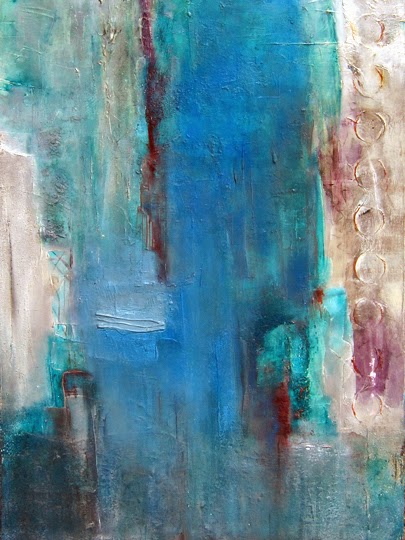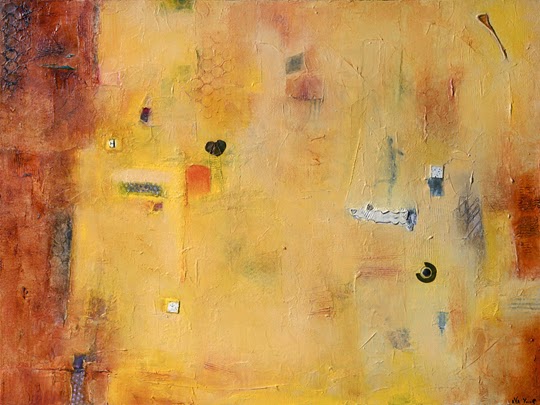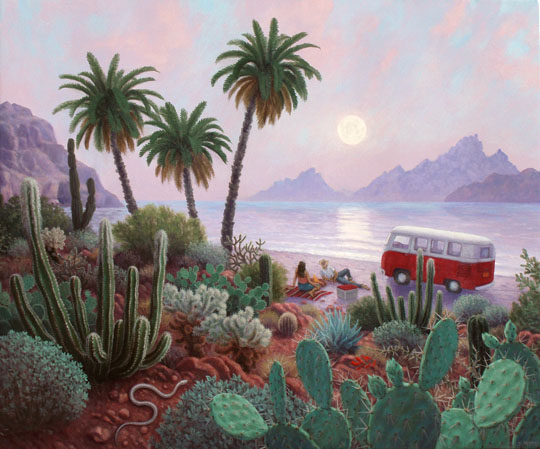I looked at the works of some of the Wilde Meyer artists, and decided to ask them about their artistic process. I wasn’t sure if they would appreciate my questions, or want to divulge their “secrets,” but they did! (I think artists really love to talk about their work.)
 |
| Yellow Sun Vinyard, 28 x 30 inches, oil on canvas Rena Vadewater |
Rena says that she sketches out a plan on paper and then on her canvas. To emphasize an area, she uses a warm color to draw an outline; then she paints inside that shape. “My patterns come from my head,” she says. “They go together like a puzzle. When I don’t know where to go next, I stop for a few days, and wait until I feel inspired to go back to the painting.”
 |
| Dingo Dogs, 19 x 23 inches, oil on canvas Rena Vandewater |
Rena has worked hard to create and maintain her unique style. Initially, she was self-taught; then she went on and obtained an MFA degree. “Although I’ve studied and learned classical painting, I prefer the naïve, primitive style,” she says. “Dingo Dogs” is a good example of Rena’s unique take on a landscape. Here, she employs all of her special techniques: the red outlines, the scruffling for the trees, the patterns in the houses, the flat paint for the dogs, and the wonderful pointillist dots for the land. Her use of the complementary green and red in the dots really makes the painting pop. To top things off, Rena encloses the painting in a patterned frame. It’s busy, but it works!
 |
| Desert Garden by Acacia Alder 40 x 30 inches, acrylic on canvas |
“First, I use acrylic gel to sculpt the surface in very particular areas,” she says. “That creates a form for the subject matter, which is somewhat abstracted. Then, I paint over the gel. Each painting has many layers of both gel and paint. It can take quite a while to complete.”
 |
| Elan: Palo Verde Musings by Acacia Alder 36 x 36 inches, acrylic on canvas |
“Desert Garden” is one of my favorite paintings by Acacia. The many textural shapes and wonderful color palette create energy, and the smooth, burnt orange path is a great, restful contrast. I really like the foliage shadows she’s created on the path.
Tracy Miller has a very interesting creative process. “I have a specific set of rules for myself when I paint,” she says. “I tone every canvas with a wash of either yellow, orange, red or hot pink to give a warm glow that informs the painting.”
Tracy explains her next step: “I make a visual haiku with black paint to create a balanced design of lines, circles or disjointed forms.”
|
|
 |
| Blue Mood by Tracy Miller 20 x 10 inches, acrylic on canvas |
Each of these artists has refined her process over time, and is now completely comfortable with it. What’s interesting to me is how personal these approaches are, and that’s why their work is so unique. Even if we understand the process, we can never paint the same way. Who wants to, anyway?
View more art by Rena Vandewater, Acacia Alder and Tracy Miller at Wilde Meyer Gallery.


















































